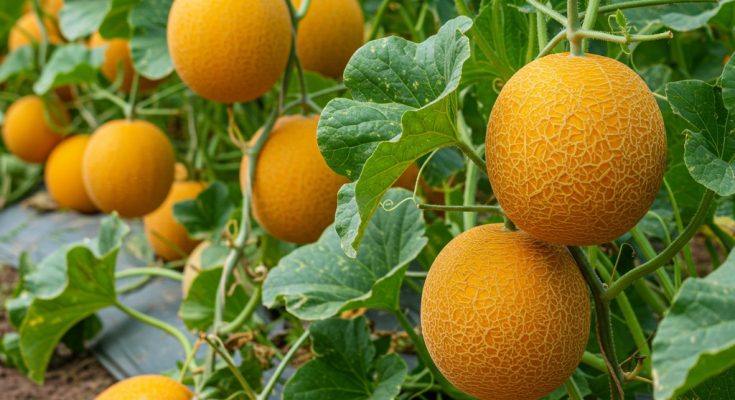Whether you have a small garden, a terrace, or just a sunny balcony, you can successfully grow melons in containers. Here’s how to start your own mini melon patch at home, from seed to harvest.
Why Grow Melons in Pots?
Growing melons in containers has several advantages:
-
-
Space-saving: No need for a large garden—just a big pot and a sunny spot.
-
Soil control: You can choose the perfect soil mix, avoiding poor or contaminated ground.
-
Pest reduction: Pots are easier to monitor and protect from pests and diseases.
-
-
Portability: You can move the plant to follow the sun or protect it from bad weather.
Melons such as cantaloupe, honeydew, and other sweet varieties can thrive in containers with the right care and attention.
What You’ll Need
To grow melons successfully in pots, gather the following:
-
-
Large pot: Minimum 40–50 cm (16–20 inches) deep and wide, with good drainage holes.
-
-
-
Melon seeds: Choose compact or bush varieties for containers (e.g., ‘Minnesota Midget’ or ‘Sugar Baby’).
-
High-quality potting mix: Rich in organic matter, well-draining, and loose.
-
Fertilizer: Balanced organic fertilizer or compost.
-
-
Support structure: Trellis or stakes for climbing varieties.
-
Sunny location: At least 6–8 hours of direct sunlight daily.
How to Plant Melons in Pots
1. Prepare the Pot
Fill your pot with a rich, well-draining potting mix. Add compost or slow-release organic fertilizer to enrich the soil. Melons love warm, fertile conditions.
2. Sow the Seeds
Plant 2–3 seeds about 2.5 cm (1 inch) deep in the center of the pot. Once the seedlings sprout and develop two sets of leaves, thin them out, keeping the strongest plant.
Alternatively, you can start seeds indoors and transplant the healthiest seedling once temperatures are consistently above 18°C (64°F).
3. Provide Support
Many melon varieties have long vines that need space to sprawl or climb. Use a sturdy trellis, cage, or even a wall or balcony railing to guide the vines upward. This saves space and keeps the fruit clean and off the ground.
If your variety is bush-type or compact, a trellis may not be necessary.
Care and Maintenance
Sunlight
Melons are sun lovers. Place your container in a location that gets at least 6–8 hours of full sun daily. The more sun, the sweeter the fruit.
Watering
Melons need consistent moisture, especially when fruits are developing. Water deeply when the top 3–4 cm (1–2 inches) of soil feels dry. Avoid overwatering, which can cause root rot.
As the fruit begins to mature, reduce watering slightly to concentrate sugars and enhance sweetness.
Feeding
Fertilize every 2–3 weeks with a balanced liquid fertilizer during the growing phase. Once flowers appear, switch to a low-nitrogen, high-potassium formula to encourage fruiting rather than leafy growth.
Pollination
Melons produce male and female flowers. If you’re growing on a balcony or indoors, you may need to hand-pollinate:
-
-
Use a small brush or cotton swab to collect pollen from a male flower.
-
Gently dab it onto the center of a female flower (the one with a small bulb behind the petals).
-
This increases your chances of getting fruit.
Pest and Disease Tips
Watch for common melon pests such as aphids, spider mites, and powdery mildew. Keep airflow good by not overcrowding plants and avoid wetting the leaves when watering.
Neem oil or insecticidal soap can help manage pests if needed.
Harvesting Your Melons
Melons are typically ready for harvest 70–90 days after sowing, depending on the variety. Signs they’re ripe include:
-
-
The melon slips off the vine easily when lifted.
-
-
The fruit emits a sweet, fruity aroma.
-
The skin changes color slightly, depending on the type.
Once harvested, allow melons to rest at room temperature for a day or two for peak flavor.
Final Thoughts
Growing melons in pots is not only possible—it’s rewarding and delicious. With a bit of sun, a big container, and some attentive care, you can enjoy juicy melons right from your own home. You’ll gain not only fresh fruit but also the joy of gardening, even in the smallest of spaces.
So don’t rush to the store next time you crave a melon—plant one instead. You’ll be surprised at how satisfying it is to grow your own sweet harvest from seed to plate.
